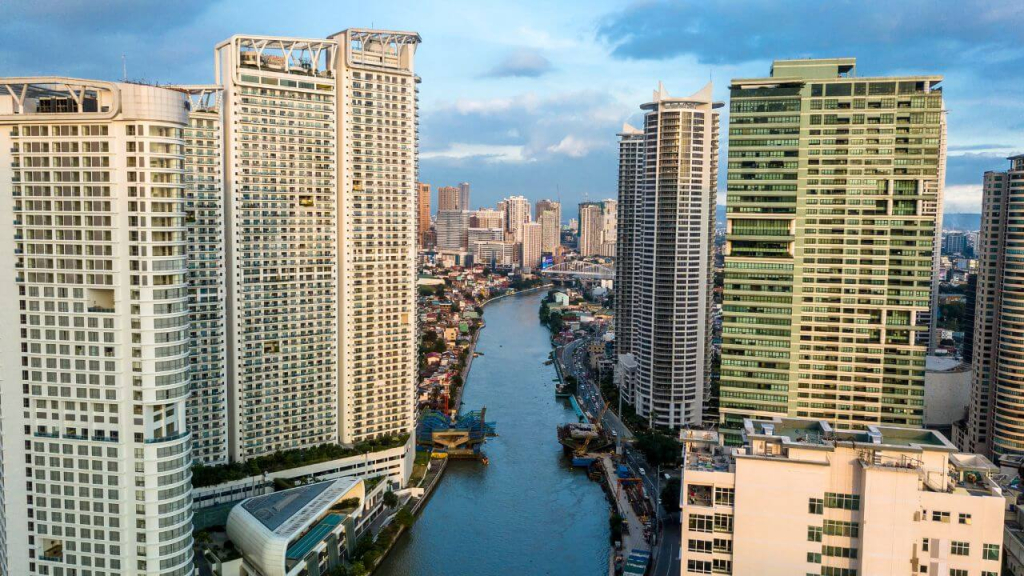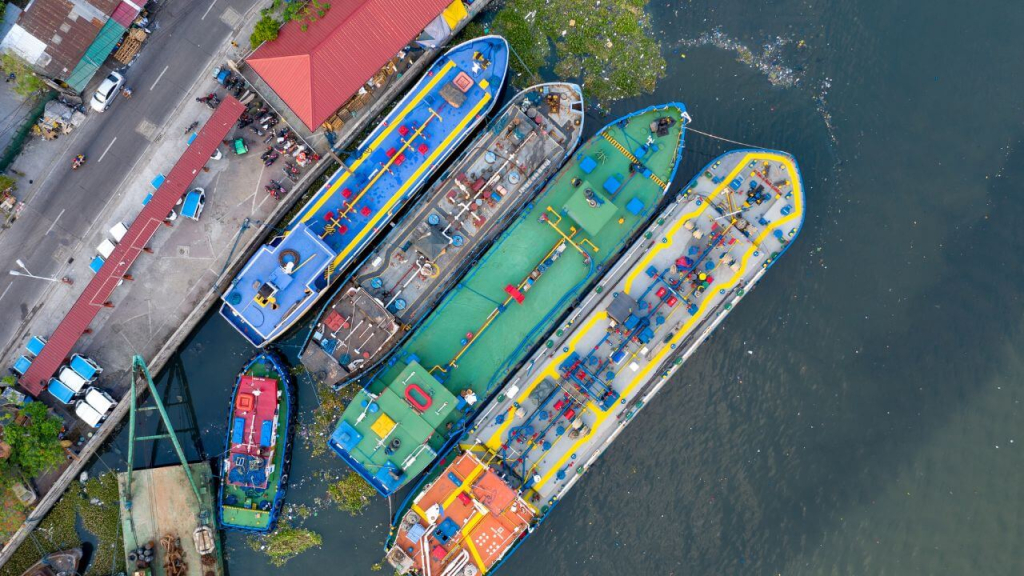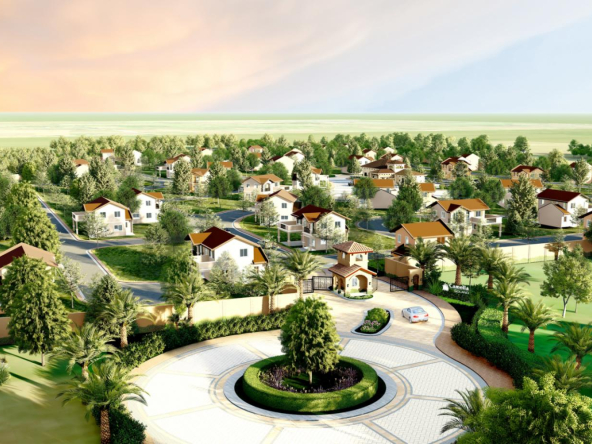
Metro Manila is notorious for its heavy traffic, causing frustration and lost productivity for commuters. With over 13 million people in the metropolitan area, the current transportation infrastructure struggles to meet demand.
Roads often experience gridlock, especially during rush hours, resulting in long commute times. To address this, there is an urgent need for innovative and efficient solutions to help decongest the city and provide alternative transportation modes.

The Manila Bay-Pasig River-Laguna Lake Ferry System project proposes a new approach to ease the city’s transportation woes.
This initiative aims to create an alternative route for commuters, spanning three significant bodies of water—Manila Bay, the Pasig River, and Laguna Lake—providing a viable east-west travel corridor. By utilizing the city’s waterways, the ferry system intends to offer a sustainable and efficient mode of transport.
Overview of the Proposed Ferry System

The Manila Bay-Pasig River-Laguna Lake Ferry System project (MAPALLAF) is under a feasibility study conducted by the Department of Transportation (DOTr) and the Public-Private Partnership (PPP) Center, aiming for completion by the end of 2024.
The water transit system is envisioned to be a high-capacity, high-frequency, and low-carbon solution, connecting various ferry stations along Manila Bay, the Pasig River, and Laguna Lake. It promises to cater to the commuting needs of thousands of passengers daily, making use of waterway routes to bypass the city’s congested streets.
The Department of Transportation aims to provide a sustainable east-west transportation corridor, filling a significant gap in Metro Manila’s mass transit infrastructure.
While existing railways and subways predominantly run north-south, the waterway system will complement these by offering cross-city connections. By connecting key areas via waterways, the project aims to reduce travel time, alleviate road congestion, and contribute to a greener environment through low-emission ferry boats.
Key Information About the Manila Bay-Pasig River-Laguna Lake Ferry System Project

The ferry project offers several significant benefits. As a low-carbon ferry system, it aims to minimize pollution by using eco-friendly technologies for the ferry boats.
The high-capacity boats will cater to a large number of passengers, thus potentially reducing the number of vehicles on the roads. Moreover, the high-frequency service ensures minimal waiting times, encouraging more people to switch from road transport to water-based travel.
One of the major aspects under consideration in the feasibility is the potential demand for this new service. The Department of Transportation (DOTr) continues to conduct passenger surveys to assess how many commuters would use the ferry system. The results will influence important infrastructure investments, including the number of ferry stations, boat capacities, and overall project cost. Additionally, engaging with government agencies and private partners will be essential for the project’s success, with a partnership between public and private enterprises considered for funding and management.
Proposed Route and Stations
The planned system will link significant areas across Metro Manila by connecting Manila Bay with the Pasig River and Laguna Lake. Strategically placed stations will provide commuters with convenient access to the service. These stations are likely to be positioned near key urban centers and residential areas to maximize accessibility and ridership.
The route, extending from Manila Bay through the Pasig River and reaching Laguna Lake, will integrate the city’s historical waterway with modern transportation needs. With the Pasig River naturally cutting across Metro Manila in an east-west direction, it serves as an ideal route for a high-capacity ferry network. The system is also expected to link with existing transportation networks, such as railways and bus routes, providing commuters with a seamless, multimodal travel experience.
Challenges and Considerations
Despite the advantages, the project faces several challenges. The Pasig River and its tributaries require consistent maintenance and dredging to ensure navigability, especially during the rainy season when water levels fluctuate. Pollution control measures also need to be intensified to maintain the water quality of the Pasig River, Laguna Lake, and Manila Bay. Coordinating between government agencies, such as the Department of Transportation (DOTr) official projects, environmental bodies, and local government units, will be crucial in addressing these issues.
The project cost will depend on the infrastructure needed, including ferry stations, boats, and dock facilities. These investments will be guided by the results of the passenger surveys, which are currently being conducted as part of the early studies. The surveys will help estimate the daily ridership and determine the scale of the operation, ensuring the system is designed to meet real demand without underutilization or overcapacity.
Importance of a Public-Private Partnership (PPP)

The ferry project is considered a public-private partnership, with the PPP Center playing a pivotal role in its planning. This collaborative approach allows for sharing the risks and benefits between the government and private sector. By engaging a private partner, the project can leverage private investment and expertise, potentially expediting the construction and operation phases.
Once the project study is completed and the project’s viability confirmed, the ferry system will proceed through various government approvals before being offered for bidding to private sector partners. The goal is to ensure that the waterway system is financially sustainable while providing affordable fares for the public. With the support of the PPP Center, the system aims to become one of Metro Manila’s important infrastructure investments, addressing transportation needs and environmental concerns.
The Road Ahead
The completion of the feasibility study and subsequent approval processes will determine the project’s timeline, with potential implementation beginning as early as next year. Once operational, the MAPALLAF system could revolutionize travel in Metro Manila, providing an efficient, eco-friendly alternative to land-based transport. Moreover, with a home in Camella, you will be strategically placed near these waterway stations. Investing in a property in Camella today positions you for future-ready mobility around Metro Manila and across the Greater Metro.
If successful, the MAPALLAF could set a precedent for other cities to follow, highlighting the benefits of investing in sustainable urban transportation. The Manila Bay-Pasig River-Laguna Lake system represents an innovative solution to Metro Manila’s traffic woes. As the city seeks to modernize its transportation network, this water-based transit system could play a significant role in transforming how people travel, offering a cleaner, quicker, and more efficient way to navigate the bustling metropolis.

Celebrate Life’s Milestones in Camella!
Make unforgettable memories in a Camella home.
Our communities are designed to elevate your living experience.


